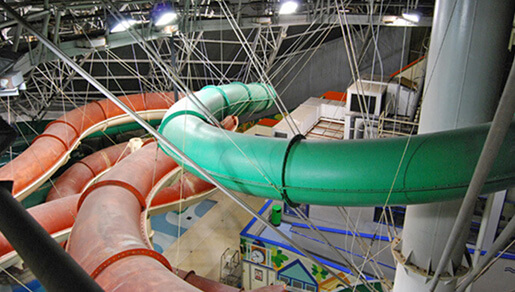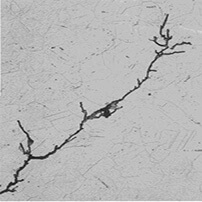Super Duplex Stainless Steel - Swimming Pools
Stainless Steel in Indoor Swimming Pools

There have been some notable failures of 316 grade stainless steel safety critical, load bearing components in swimming pool environments:
1985 - Roof collapse, Switzerland.
2001 - Suspended ceiling collapse, Netherlands.
2003 - Roof collapse, Finland.
These failures were found to be due to chloride stress corrosion cracking within the 316 grade stainless steel tendons.
Why does this happen?
The atmosphere of indoor pools is one of the most aggressive environments to be found in building applications. High water temperatures, combined with increasing usage has resulted in higher levels of chlorine based disinfection being used.
These disinfectants react with contaminants to produce chloramines which are considered to be the most important factor in the corrosion of stainless steel in these pool environments. Higher air temperatures also significantly accelerate corrosion.
Higher levels of humidity as a result of increased water turbulence lead to increased condensation in cooler parts of the buildings, and during cooler night time periods.
Repeated drying out and re-condensing of the chlorine rich water vapour results in very aggressive build up of chlorine species which can produce a highly corrosive film, leading to accelerated stress corrosion cracking.
The components within indoor pools most likely to be affected are ceiling wires and rods, water ride or flume support cables, structural fasteners, cable strapping, brackets and cables for lighting units, supports for suspended ceilings, rod and bar supports for ventilation ducting.
Since 1985 there have been tests carried out and recommendations made, that promote the use of super duplex grades of stainless steel for these specific safety critical applications.
The British Stainless Steel Association provide this useful technical page: Duplex Stainless Steels - A Simplified Guide

Above is a highly magnified view of a crack showing transgranular pattern and branching, typical of chloride stress corrosion cracking of stainless steel. (500X original magnification).




